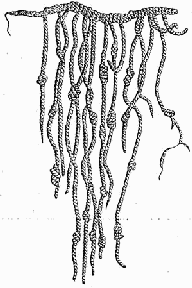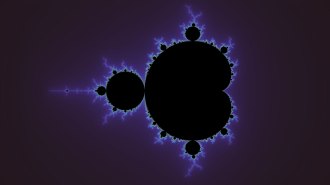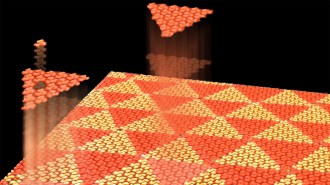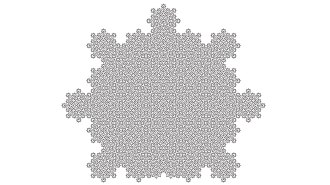In Clive Cussler’s thriller Inca Gold, a crucial clue in an international treasure hunt is encoded in an ancient tangle of knotted, colored strands. Using a computer to identify patterns, an expert patiently deciphers the message, taking into account strand color and thickness and knot placement and type.

If only it were actually that simple.
Such assemblages of strings and knots are known as khipu (or quipu). They were used centuries ago by the Incas and earlier societies in the Andean region of South America as communication devices to record transactions, perform various accounting functions, keep track of resources, and perhaps even recount histories or tell stories. The word khipu means “knot” in the Cusco dialect of Quechua, the native language of the Andes.
A khipu consists of dyed strings, woven from cotton fibers or occasionally llama or alpaca wool. It’s constructed a bit like a grass skirt, with a single, long, thick cord from which dangle as many as 2,000 pendant strings. Subsidiary strings sometimes hang from the pendants. Each string typically features an array of knots.
When Spaniards conquered the Incas in the 16th century, they found khipu being used by Incan administrators for recording and communicating information in a bureaucracy that had to keep tabs on an empire stretching over more than 5,000 miles. However, knowledge about how and what these knotted strings encoded quickly died out.
Now, only about 700 khipu remain in existence. Deciphering them has proved to be an enormous, frustrating task. New computer databases, however, are allowing searches for patterns that are starting to yield insights into the meaning of these knotted messages.
Much of the encoded information appears to be numeric. In the 1920s, amateur enthusiast Leland L. Locke established that clusters of knots on many pendant strands represent base-10 digits. Successive knot clusters, separated by distinct gaps as you ascend a pendant string toward the main cord, represent units, 10s, 100s, 1000s, and so on.
There are three types of knots: simple overhand knots, long knots comprised of two or more turns, and figure-eight knots. Digits in positions for 10 and higher powers are just clusters of the requisite number of simple knots. Digits in the units position are represented by long knots with the appropriate number of turns. The digit 1 is a figure-eight knot.
Such a scheme makes it easy to identify where a number ends, especially when a single string encodes several numbers (and maybe even a sum). Zero is represented by the absence of a knot in the appropriate position.
So, suppose a pendant string contains, from the top, a cluster of four simple knots, then a cluster of five simple knots, and a long knot of two turns. This pattern would represent the number 452.
More recently, Marcia and Robert Ascher analyzed more than 200 khipu, carefully cataloging each one by taking into account cord type, placement, length, and color and knot type, position, and numerical interpretation (see http://instruct1.cit.cornell.edu/research/quipu-ascher/).
They discovered that many cords do represent numbers and arithmetical operations. One pendant strand, for example, may show the sum of numbers found on several strands hanging next to it. Sometimes, there are sums of sums.
However, a substantial fraction of the strings, though still apparently composed of digits, appear to stand for something else—perhaps identifying a place, an individual, or a thing.
Now, anthropologist Gary Urton and mathematician and weaver Carrie J. Brezine of Harvard University have identified a knot pattern in a small set of khipu that appears to identify a particular place. They describe their finding in the Aug. 12 Science.
Starting in 2002, Urton and Brezine created a relational computer database with the goal of collecting all known information about khipu in one centralized repository. For each of several hundred khipu, they included the length of the main string, the number of pendants, their color, various knot details, and even the spin and ply of each string (see http://khipukamayuq.fas.harvard.edu/).
In studying a set of 21 khipu found together at an important Incan administrative center at Puruchuco, near Lima, Peru, Urton and Brezine were able to sift through the data to identify seven khipu that appeared mathematically related.
These particular khipu apparently contained cumulative numerical data, as if officials had compiled sums from data submitted by local accountants in different parts of the empire. Each successive higher level represented sums of accounts from lower levels, with even some “smoothing” of the data.
Based on the patterns they identified, Urton and Brezine also concluded that a particular khipu element—three figure-eight knots at the start—found on all 21 of the khipu may identify the location. It could be a code for Puruchuco. If so, this would be the first “word” extracted from an Incan khipu.
There’s much, much more to learn. “Quipus are very much like puzzles,” Marcia and Robert Ascher once noted. “They are coded in the sense that no matter how clear they may have been to long dead quipu makers, they are not clear to us.”
Computer databases are now among the new tools available to both scientists and amateurs for teasing meaning out of ancient tangles. You can search for own solutions to the code of the khipu and the mysteries of the Incas.






